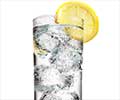
Lead researcher Naomi Crystal '11G said that the popular post-workout regimen help athletes feel better and doesn't help them perform better.
She said that the research is really mixed as to whether they're beneficial, asserting that they were miserable and that if they didn't work, athletes shouldn't waste their time.
Crystal completed the study with the help of UNH associate professor of kinesiology Dain LaRoche, assistant professor of kinesiology Summer Cook, and associate professor of molecular, cellular and biomedical sciences Dave Townson.
For the study, the researchers recruited 20 recreationally active college-age men to run for 40 minutes downhill at a grade of -10 percent.
Half the subjects then submitted to a 20-minute ice bath, standing in a tall recycling bin filled with thigh-high ice water cooled to a chilly five degrees Celsius (40 degrees Fahrenheit).
Advertisement
The researchers found no difference in strength or perceived soreness between the subjects who took ice baths and the control group. Thigh circumference did not change significantly for any of the subjects after the run.
Advertisement
The lack of difference between the control and the cryotherapy group surprised the researchers. "I expected to see an improvement in soreness, an improvement in strength with the ice bath," says Crystal. She notes that research on ice baths has produced a range of results, in part because there's no standard protocol for the treatment.
The study has been published in the European Journal of Applied Physiology.
Source-ANI








